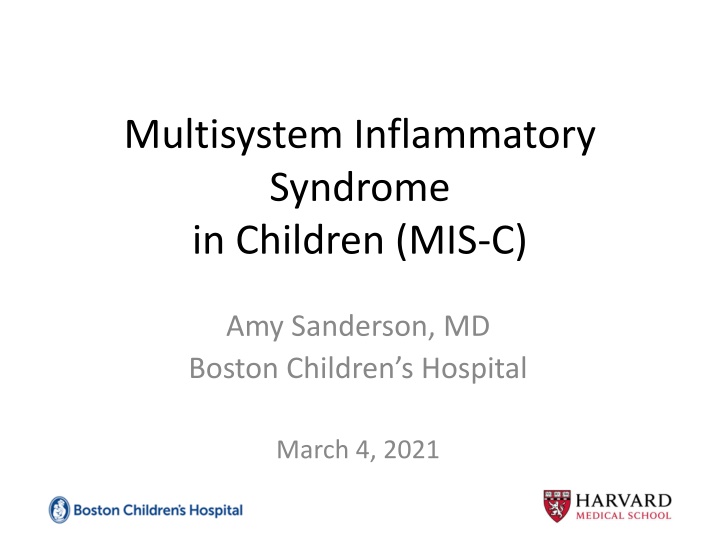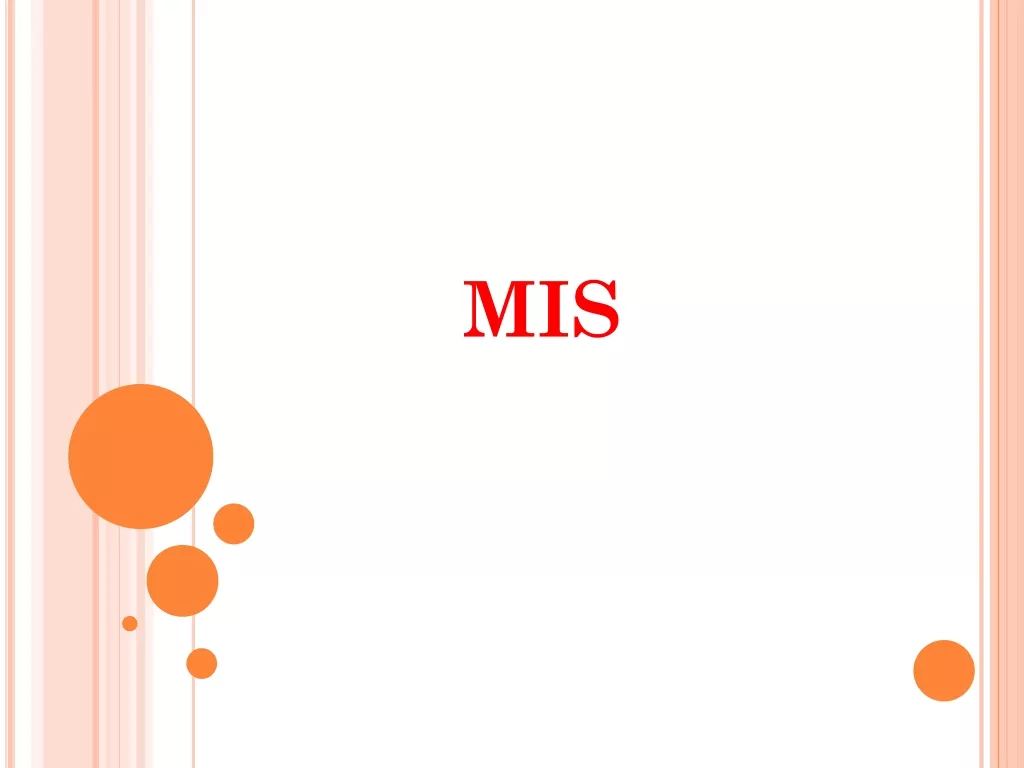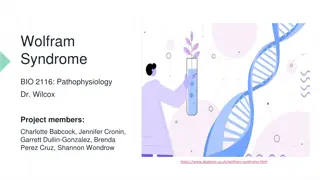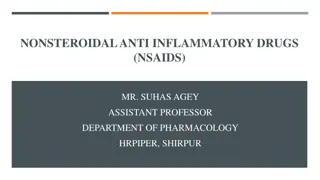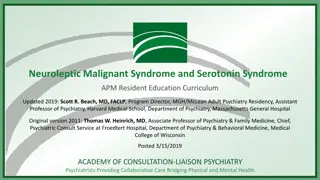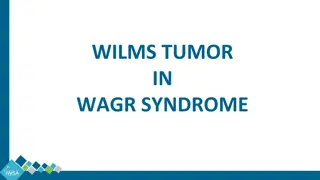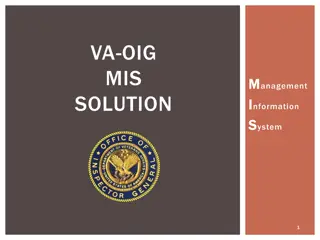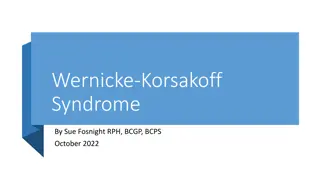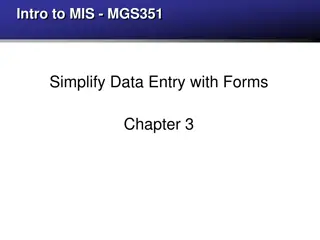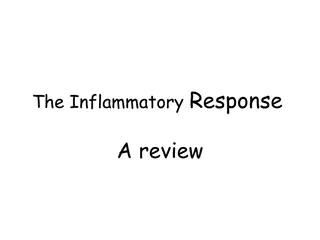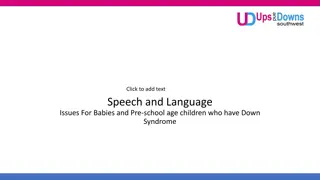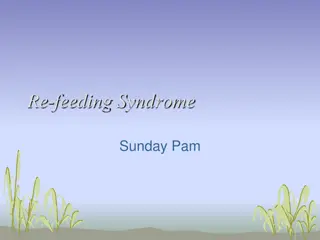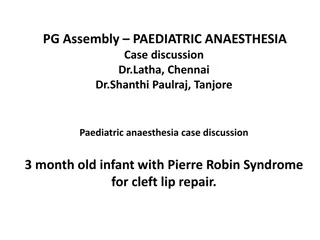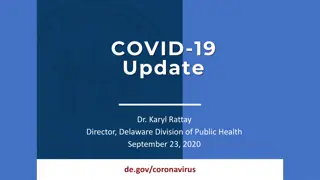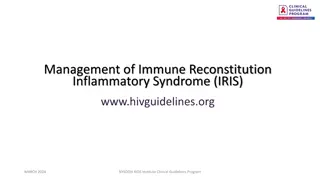Multisystem Inflammatory Syndrome in Children: MIS-C Overview
Multisystem Inflammatory Syndrome in Children (MIS-C) is a rare but serious condition associated with SARS-CoV-2 infection. This syndrome presents with fever, inflammation, and multiorgan involvement, requiring hospitalization. Learn about the pathophysiology, presenting symptoms, and CDC case definition of MIS-C in pediatric patients.
Download Presentation

Please find below an Image/Link to download the presentation.
The content on the website is provided AS IS for your information and personal use only. It may not be sold, licensed, or shared on other websites without obtaining consent from the author.If you encounter any issues during the download, it is possible that the publisher has removed the file from their server.
You are allowed to download the files provided on this website for personal or commercial use, subject to the condition that they are used lawfully. All files are the property of their respective owners.
The content on the website is provided AS IS for your information and personal use only. It may not be sold, licensed, or shared on other websites without obtaining consent from the author.
E N D
Presentation Transcript
Multisystem Inflammatory Syndrome in Children (MIS-C) Amy Sanderson, MD Boston Children s Hospital March 4, 2021
Case study 14-year old multiracial (Caucasian and Hispanic) male; PMH: constipation & eczema Presented to the ED with 4 days of fever, fatigue, & abdominal pain (in stable condition without significant multisystem involvement) During hospitalization, he developed severe LV dysfunction and mixed hypovolemic, distributive and cardiogenic shock Discharged home after 12 days F/U echo normal Vari. Progress in Pediatric Cardiology, Volume 58, 2020
CDC Case Definition An individual aged <21 years presenting with fever, laboratory evidence of inflammation and evidence of clinically severe illness requiring hospitalization, with multisystem (>2) organ involvement; AND No alternative plausible diagnoses; AND Positive for current or recent SARS-CoV-2 infection by RT-PCR, serology, or antigen test; or exposure to a suspected or confirmed COVID-19 case within the 4 weeks prior to the onset of symptoms www.cdc.gov/mis-c/hcp
Incidence SARS-CoV-2 infection 322 per 100,000 (< 21 y/o) MIS-C 2 per 100,000 It s rare! Dufort EM. N Engl J Med. 2020;383(4):347
Pathophysiology Immune dysregulation May have antibodies Negative SARS- CoV-2 PCR
Presenting symptoms Persistent fevers (median duration 4 to 6 days) 100% Gastrointestinal symptoms (abd pain, N/V, diarrhea) 60-100% Rash 45-76% Conjunctivitis 30-81% Mucous membrane involvement 27-76% Neurocognitive symptoms (headache, lethargy, confusion) 29-58% www.uptodate.com
Presenting symptoms Respiratory symptoms (tachypnea, dyspnea) 21-65% Sore throat 10-16% Myalgias 8-17% Swollen hands/feet 9-16% Lymphadenopathy 6-16% www.uptodate.com
Clinical Findings Shock 32-76% Criteria for complete Kawasaki disease met 22-64% Myocardial dysfunction (by echo or elevated troponin/BNP) 51-90% Arrhythmia 12% Acute respiratory failure requiring noninvasive or invasive ventilation 28-52% Acute kidney injury 8-52% Serositis (small pleural, pericardial, and ascites) 24-57% Hepatitis or hepatomegaly 5-21% Encephalopathy, seizures, coma, or meningoencephalitis 6-7% www.uptodate.com
Laboratory findings Lymphocytopenia 80-95% Neutrophilia 68-90% Mild anemia 70% Thrombocytopenia 31-80% Hypoalbuminemia 48-95% Mildly elevated liver enzymes 62-70% Elevated lactate dehydrogenase 10-60% Hypertriglyceridemia 70% www.uptodate.com
Laboratory findings C-reactive protein Erythrocyte sedimentation rate 90-100% 75-80% D-dimer 67-100% Fibrinogen 80-100% Ferritin 55-76% Procalcitonin 80-95% Interleukin-6 80-100% Troponin BNP or NT-pro-BNP 50-90% 73-90% www.uptodate.com
Imaging findings Echocardiogram Depressed LV function Coronary artery dilation/aneurysm Other findings can include mitral regurgitation and pericardial effusion 31-58% 8-38% -- Chest radiograph Normal in many patients Abnormal findings included small pleural effusions, patchy consolidations, focal consolidation, and atelectasis -- -- www.uptodate.com
Imaging findings Chest CT Findings generally similar to those on chest radiograph A few patients had nodular ground-glass opacification Abdominal imaging (ultrasound and/or CT) Findings are nonspecific, including free fluid, ascites, bowel and mesenteric inflammation, including terminal ileitis, mesenteric adenopathy/adenitis, and pericholecystic edema www.uptodate.com
Clinical spectrum www.uptodate.com
COVID-19 or MIS-C? COVID-19 MIS-C Median age 11.7 years Median age 8.9 years More likely to be Hispanic or Latino More likely to be non- Hispanic Black More likely to have 1 chronic medical conditions More likely to have mucocutaneous findings 57% had GI symptoms 90% had GI symptoms Higher platelet count More likely to have cardiac involvement Feldstein LR. JAMA. February 24, 2021
Kawasaki Disease or MIS-C? Kawasaki Disease Infants and young children MIS-C Older children & adolescents Higher incidence in East Asia and in pts of Asian descent Black & Hispanic children disproportionally affected Absolute lymphocyte and platelet counts tend to be higher GI symptoms (abdominal pain) are very common Myocardial dysfunction and shock occur more commonly Inflammatory markers tend to be less elevated
Codes MIS-C due to Covid-19 (current infection) MIS-C due to previous Covid- 19 infection (resolved) M35.8 Other specified systemic involvement of connective tissue (principal diagnosis) for the MIS-C U07.1 COVID-19 (principal diagnosis) M35.8 Other specified systemic involvement of connective tissue (secondary diagnosis) B94.8 Sequelae of other specified infectious and parasitic diseases (secondary diagnosis) for the sequelae of a COVID-19 infection
Management based on presentation Volume resuscitation Vasoactive/inotropic agents Shock IVIG Aspirin Glucocorticoids Kawasaki LV dysfunction: IV diuretics and inotropic agents ECMO VAD Cardiac dysfunction
Ceftriaxone + Vancomycin OR Ceftaroline + Zosyn Remdesivir Antivirals Antibiotics Steroids IVIG Methylpred Prednisolone Prednisone Intravenous immune globulin
Other therapies Interleukin-1 inhibitors Anakinra Canakinumab IL-6 inhibitors Tocilizumab Convalescent plasma Antithrombotic therapy
Outcome Prognosis is uncertain! Most children survive Most with cardiac involvement recover function Nature & frequency of long-term complications are unknown
Thank you! Questions?? amy.sanderson@childrens.harvard.edu
